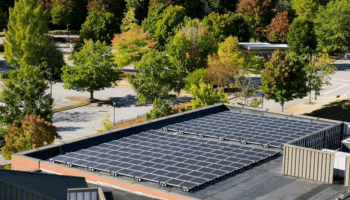Clean Technica, a U.S. based online media company, published an article regarding recent changes in government ‘clean energy’ policy. Here are the highlights of their feature:
Government Policy Affects Clean Energy
Every few years, a new administration tries to steer the course of the energy transition by decree. Some do it by boosting clean technologies through subsidies and regulation. Others try to restore fossil fuel dominance by dismantling those same supports. Donald Trump’s return to office brought immediate efforts to roll back clean-energy policies, cut federal incentives, and revive coal and oil narratives…yet the structural momentum of the clean-energy transition remains. The cost curves are still falling, factories are still being built, and the global supply chain for electrons and metals has become too integrated to unravel. Trump can slow it, but he cannot stop it. As the next election cycle approaches, candidates will have to confront the realities of energy policies in the election, particularly as public awareness of climate change grows. Voters are increasingly prioritizing sustainable solutions, which may compel even those hesitant about the clean-energy transition to adopt more progressive stances. Ultimately, despite political fluctuations, the push for cleaner energy solutions is unlikely to fade, driven by both market forces and public sentiment.
Domestic Manufacturing Projects Continue Despite Policy Changes
The Trump administration’s 2025 reversals have been sweeping on paper. The United States withdrew again from the Paris Agreement, the Environmental Protection Agency reopened dozens of climate and pollution rules, and the ‘One Big Beautiful Bill’ Act set out to phase down the Inflation Reduction Act’s clean-energy tax credits. Electric vehicle subsidies are scheduled to expire, home electrification grants are being clawed back, and billions in clean-energy projects were canceled in politically unfriendly states. Moreover, states are now forced to navigate a turbulent regulatory landscape, hindering local initiatives aimed at reducing emissions. This shift has prompted renewed discussions about the future of energy policy, including the nc clean power plan overview, which some policymakers hope to revive amidst these changes. As various stakeholders push back against the rollbacks, the battle over clean energy remains a focal point of national debate.
Over the past five years, the United States has announced or begun construction on well over 800 GWh of battery cell capacity. Even with a few cancellations, the buildout remains historic.
Solar module costs have dropped over 90% since 2010…lithium-ion batteries—once exotic and expensive—are now a basic industrial commodity
The deeper reason Trump cannot stop the transition is that it has already outgrown politics. The clean-energy economy is now market-led, not policy-forced… The policy pendulum may swing, but the infrastructure keeps growing.
The Rest of the World Continues to Invest in Clean Energy
Europe, China, and India are still expanding manufacturing at a combined pace that dwarfs the US slowdown. Their scale will continue to push technology costs down, indirectly forcing American firms to rejoin the race or lose market share. The transition does not stop when one country blinks; it simply reroutes capital to where it is welcome.
U.S. Policy Can Slow the Move Towards Clean Energy, but Cannot Stop It
The political shocks of 2025 have slowed the timeline in a few locations, but the physics of the energy economy remain the same: batteries are still getting cheaper, factories are still rising, and electrification is still spreading
The cost of solar and wind keeps dropping. Battery energy density keeps improving. Every gigafactory under construction today has an operational life well beyond any administration…. Trump can slow America’s progress toward that future, but he cannot stop it. The rest of the world will keep building, learning, and scaling. In the end, the transition will roll forward, powered not by political will but by simple inevitability. The only real question is whether the United States keeps up or watches from behind as others claim the markets and industries of the next century. The energy transition in our nation is not just a technological shift; it is a crucial economic opportunity that can drive job creation and innovation. As countries across the globe embrace renewable energy, the competitive landscape will favor those who adapt swiftly. If we falter in our commitment, we risk falling behind in a race that defines the future of energy and sustainability.
click here for the full clean technica article by Michael Barnard
















